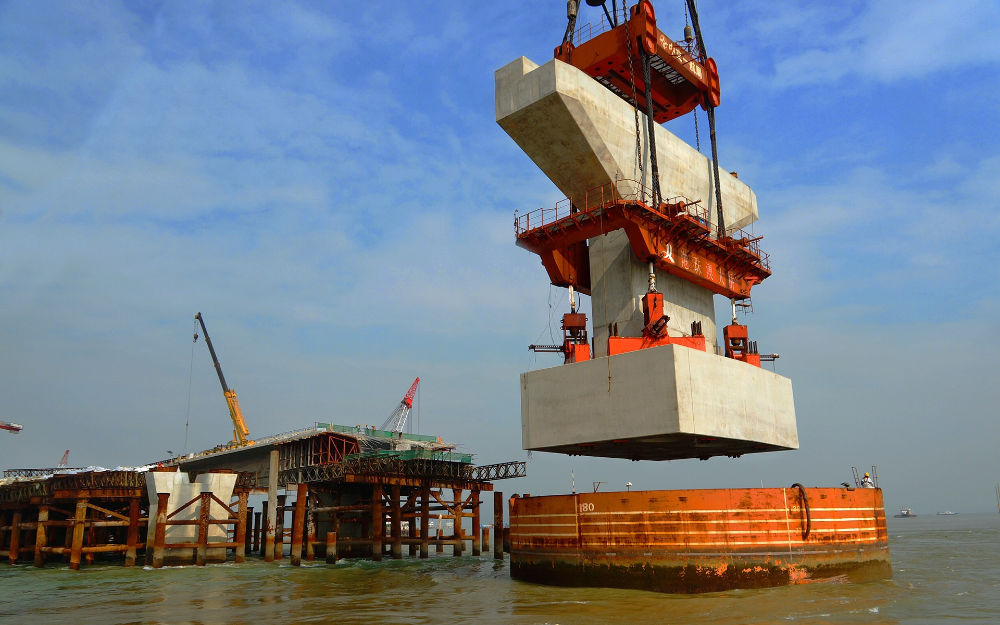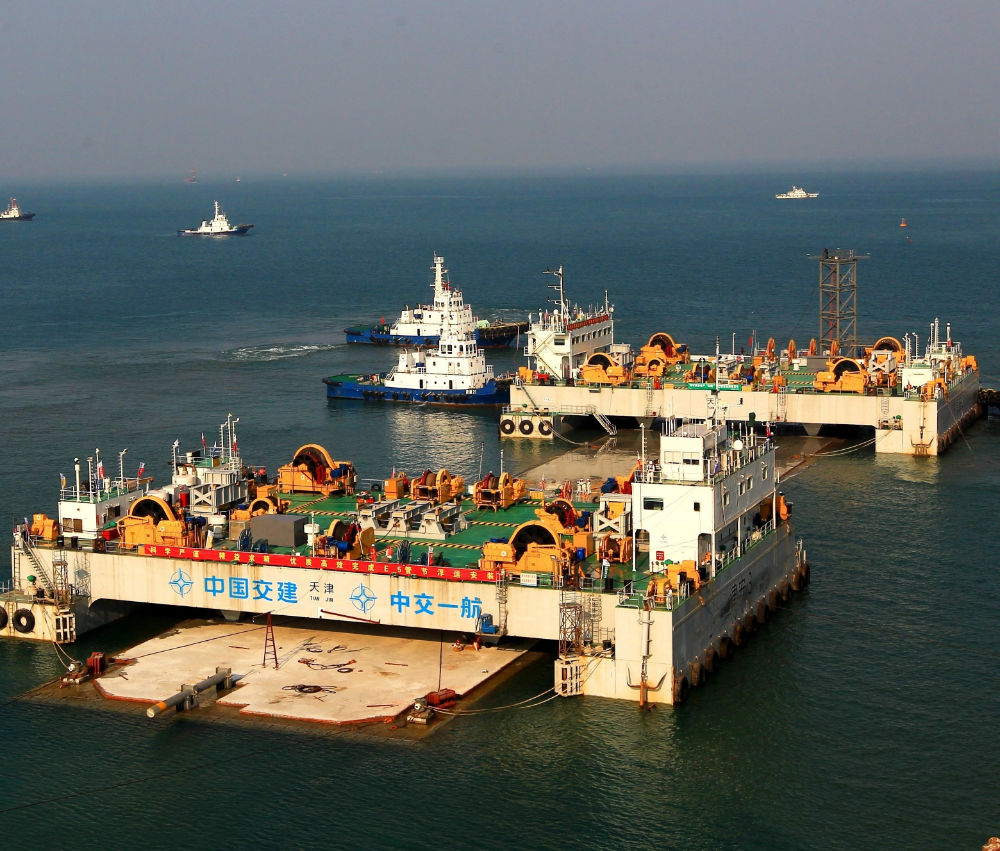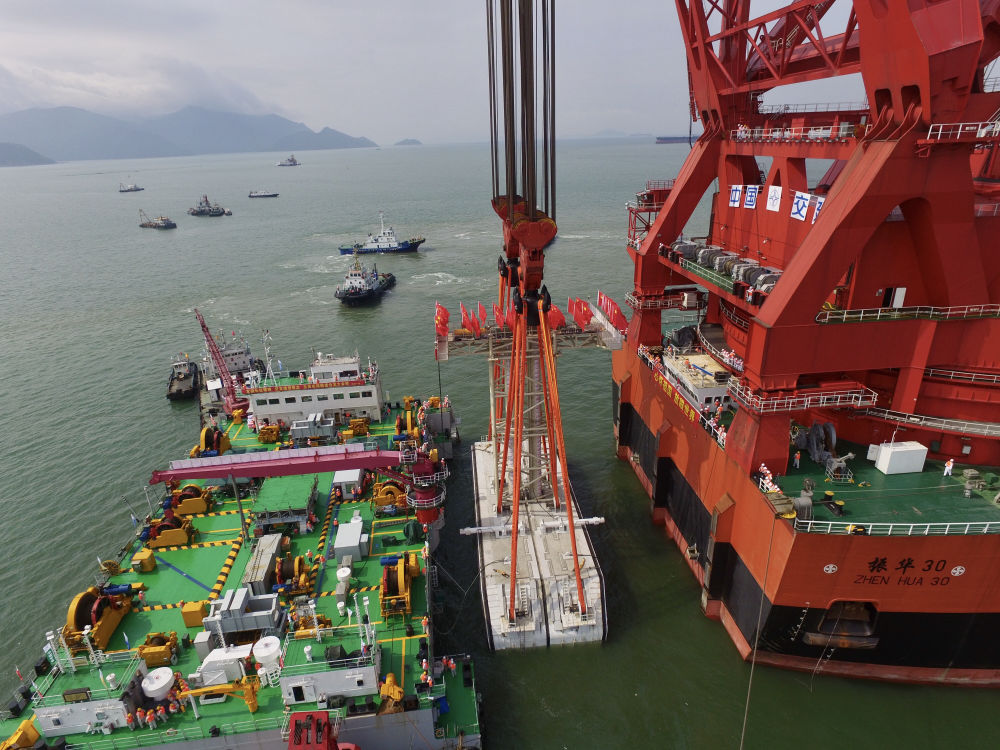Main Bridge

The Main Bridge, a dual 3-lane carriageway, is approximately 30 kilometres long comprising a sea viaduct section of approximately 23km and a tunnel section of approximately 7km.
The viaduct section consists of three cable-stayed bridges, namely Qingzhou Channel Bridge, Jianghai Channel Bridge and Jiuzhou Channel Bridge. Among the three bridges, the Qingzhou Channel Bridge has the longest main span of about 458 m long.



To minimize disturbance to marine life and to ensure the quality of works, precast and prefabrication techniques were widely adopted in the project. Pile caps, steel bridge decks and steel towers were manufactured off-site and transported to the construction site for erection.

The weight of steel tower of the Jiaghai Channel Bridge is about 3,100 tonnes. Integral erection method, which can substantially reduce the on-site welding work and enhance the quality of steelworks and safety during erection was adopted for the erection of the steel tower but a lot of challenges, such as water current, wind speed and operation of existing navigation channel, were encountered and needed to be addressed during construction. Site trials were carried out to ensure safety and quality of works prior to the erection of steel tower. The steel usage for the steel bridge decks amounts to 420,000 tonnes (equivalent to the total weight of 60 numbers of Eiffle Tower). The total bridge deck area reaches 700,000 square metres, which is equivalent to about 98 football pitches. The road surfacing work is huge and the total weight of the bituminous materials used is about 100,000 tonnes.


Since the immersed tube tunnel is in open sea and the maximum water depth is up to 45m, technical difficulties such as stronger and unstable wind speed, wave and water current conditions had to be overcome when tunnel segments were placed. The size of a standard tunnel segment is approximately 180m (long) x 38m (wide) x 11m (high), weighing 80,000 tonnes. The top surface area of the tunnel section is about 7,500 square metres, nearly the size of a standard football pitch. The tunnel segments were precast at the precasting yard on Guishan Island, and transported by tug boats to the construction site for placement in their final position.

The final connection of the immersed tube tunnel was challenging. Prefabricated steel structures were adopted so that the need to work under deep water condition could be reduced and construction time shortened.

As the weight of the final connection is as much as 6,000 tonnes, the contractor deployed the largest lifting barge in the world to erect and install the final connection. During the erection, the contractor faced difficulties such as airport height restriction, instability of water current, working under deep water and tight tolerance of connection within ±25mm. Workers were deployed to perform welding and grouting works inside the tunnel segments immediately after tunnel segments E29 and 30 were connected.